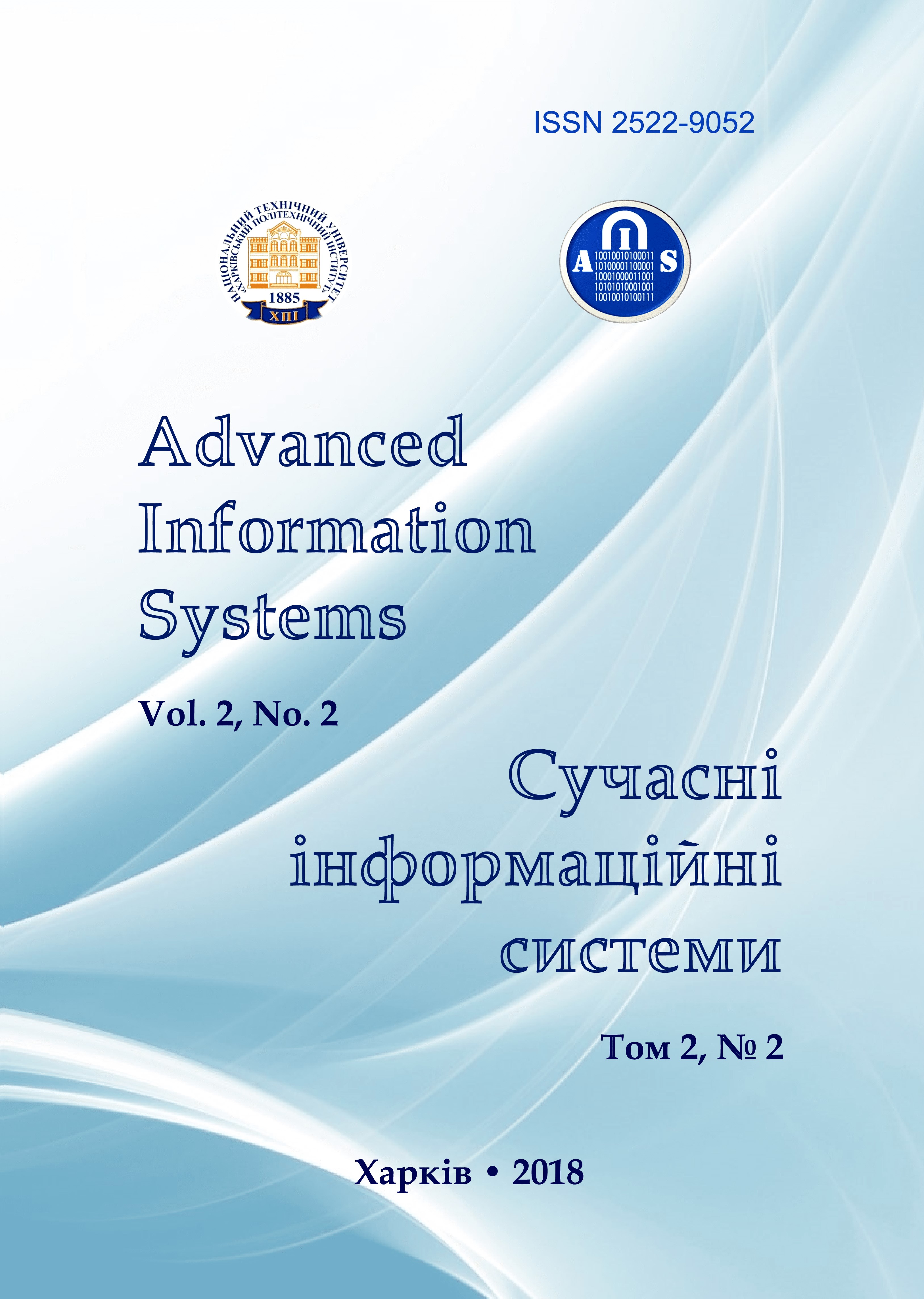Mixed consistency of the data in multicloud systems
Main Article Content
Abstract
In multi-cloud systems, supporting of an adaptive level of consistency of data when they are located in data centers of different owners remains a problem that is why the subject of study in the article is the mixed consistency of the data of such projects. Known consistency models based on the assumption that not all data have to the same level of consistency haven't got a common paradigm allowing to be used them for multicloud systems. The goal of the work is to develop an adaptive model of mixed consistency. The task to be solved is to formalize the procedure for forming a multi-layered nested map of consistency of the data located in different owner's cloud systems. The methods used are the protomolecular approach, graph theoretic methods, mathematical modeling. The following results were obtained: the protomolecular approach has allowed to forming a model of an multi-layered map of consistency of the data. The metric for each undivided unit of the model, which is a cortege from the consistency rank, from the interval of the rank change and from the degree of update influence is developed. Proposed model gives ability of management of necessary strength of data consistency by developers according to semantic of a project. The ability of automatic dynamic adaptation of strength degree of data consistency during functioning of the project is considered. Conclusions. The scientific novelty of the results obtained is as follows: the model of mixed consistency of the data located in cloud systems of different owners was proposed by defining the protomolecular approach. Creation and maintenance of the proposed adaptive mixed model of the data consistency requires additional actions from developers during deploying and maintaining data in a multi-cloud system, but it allows to reduce the cost of cloud services maintaining.
Article Details
References
It_man (2018), “5 Trends in Virtualization: What to Expect in 2018”, available at : https://habr.com/company/it-grad/blog/350356/ (last accessed March 07, 2018).
Colobridge (2017), “Is the hybrid cloud market growing? Forecast for the period 2014-2021“, available at : https://blog.colobridge.net/2017/03/hybrid-cloud-forecast/ (last accessed March 07, 2018).
It_man (2017), “6 Trends in IT Infrastructure: Forecast for 2018”, available at: https://habr.com/company/it-grad/blog/341374/ (last accessed March 07, 2018).
Orlov, S. (2017), “The multi-cloud world”, available at: http://www.globalcio.ru/workshops/2019/ (last accessed March 07, 2018).
Petersen, S. (2018), “IT-companies talk a lot about the multi-clouds. What do they mean?”, available at: https://www.itweek.ru/its/article/detail.php?ID=199326/ (last accessed March 07, 2018).
Cisco (2015), “Cloud computing: changing the role and importance of the IT department. Cloud from the point of view of man-agers”, available at: https://www.cisco.com/c/dam/m/ru_ru/internet-of-everything-ioe/iac/assets/pdfs/cloud/C11-733578-00-Intercloud-WP-v5a-RU.pdf (last accessed March 07, 2018).
Cisco (2017), “Press Releases 2017. Cisco and Google jointly develop a hybrid cloud solution”, available at: https://www.cisco.com/c/ru_ru/about/press/press-releases/2017/10-27.html (last accessed March 07, 2018).
Guerzoni, R., Vaishnavi I. and Caparros D.P. (2017), “Analysis of end‐to‐end multi‐domain management and orchestra-tion frameworks for software defined infrastructures: an architectural survey”, Transactions on Emerging Telecommunications Technologies, Vol. 28, No. 4, pp.185-204, available at: https://doi.org/10.1002/ett.3103.
Computer Review (2018), “Aggregation API, storage, security and network functions are improved in Kubernetes 1.10”, avail-able at: http://ko.com.ua/v_kubernetes_1_10_ uluchsheno_agregirovanie_api_hranenie_bezopasnost_i_setevye_funkcii_ 124065 (last accessed March 07, 2018).
McClure, T. (2016), White Paper. Strong Consistency versus Weak Consistency, ESG, Milford, 8 p.
Esteves, S., Silva, J. and Veiga, L. (2012), “Quality-of-service for consistency of data geo-replication in cloud computing”, Proceedings of the 18th International Conference “European Conference on Parallel Processing”, pp. 285-297.
Yu, H. and Vahdat, A. (2000), “Design and evaluation of a continuous consistency model for replicated services“, Proceedings of the 4th Conference on Symposium “Operating System Design & Implementation”, Vol. 4, pp. 21-35.
Wada, H., Fekete, A., Zhao, L., Lee, K. and Liu, A. (2011), “Data Consistency Properties and the Trade-offs in Commercial Cloud Storage: the Consumers' Perspective”, Proceedings of the 5th biennial Conference “Innovative Data Systems Research”, Vol. 11, pp. 134-143.
Tanenbaum, A. and Van Steen, M. (2003), Distributed systems: principles and paradigms, Publishing house “Piter”, Saint Petersburg, 877 p.
Kraska, T., Hentschel, M., Alonso, G. and Kossmann, D. (2009), “Consistency rationing in the cloud: Pay only when it mat-ters”, Proceedings of the VLDB Endowment, Vol. 2, No. 1, pp. 253–264.
Veiga, L., Negrão, A. and Nuno, S. (2010), “Unifying divergence bounding and locality awareness in replicated systems with vector-field consistency”, Journal of Internet Services and Applications, Vol. 1, No. 2, pp. 95-115, available at: https://doi.org/10.1007/s13174-010-0011-x.
Sruthymol, K.S. and Aswathy, R. (2015), “Cloud Storage Service with Auditing Cloud Consistency”, International Journal of Modern Trends in Engineering and Research, Vol. 2, No. 9, pp. 335-340.
Bailis, P., Davidson, A., Fekete, A., Ghodsi, A., Hellerstein, J.M. and Stoica, I. (2013), “Highly available transactions: Virtues and limitations”, Proceedings of the VLDB Endowment, Vol. 7, No. 3, pp. 181-192.
Viotti, P. and Vukolić, M. (2016), “Consistency in non-transactional distributed storage systems”, ACM Computing Surveys, Vol. 49, No. 1, pp. 19-64.
Li, C., Porto, D., Clement, A., Gehrke, J., Preguiça, N. and Rodrigues, R. (2012), “Making Geo-Replicated Systems Fast as Possible, Consistent when Necessary”, Proceedings of the 10th USENIX conference “Operating Systems Design and Implementation”, Vol. 12, pp. 265-278.
Easterlin, R.A. (1974), “Does economic growth improve the human lot? Some empirical evidence”, Nations and households in economic growth, pp. 89-125.
Ramsay, J., Barbesi, A., Preece, J. (1998), “A psychological investigation of long retrieval times on the World Wide Web”, Interacting with computers, Vol. 10, No. 1, pp. 77-86.
